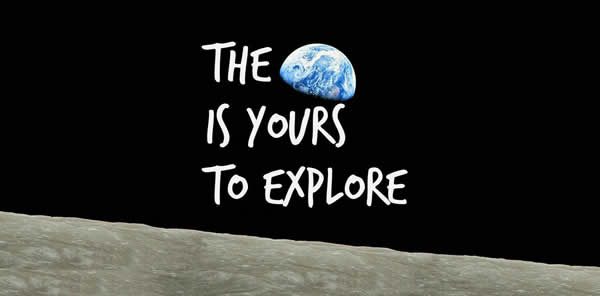HiRISE images
Circles

A piece of Mars: What are those dark, flat circles and why are there little dunes sitting on top of them? They're probably old impact craters that got filled in with dark sediment, and were then eroded flat. So you're seeing the old crater floors -- the crater rim and ejecta have all been eroded away. Dunes have formed out of some of the dark sediment that's slowly eroding away. (HiRISE ESP_029422_2055 NASA/JPL/University of Arizona) read more ❯
Mysterious textures

A piece of Mars: Dunes don't usually have a rough surface texture like these do. It's not clear what's going on. Are they ancient dunes that are being eroded? What causes this particular texture? It seems unique to high elevations on Mars. Nobody knows yet. (HiRISE PSP_009448_1670, NASA/JPL/University of Arizona) read more ❯
Dune cannibals

A piece of Mars: Dunes often cannibalize each other, with new dunes forming from the sand in older dunes. Here the tan dunes have formed from the sand that made up the grayish blue dunes. Notice the banding on the bluish dunes -- this is a sign of erosion. The banding is probably layering in the blue dunes that was exposed as a wind from the northwest scoured the surface. (HiRISE ESP_028918_1605, NASA/JPL/University of Arizona) read more ❯
Bye-bye, crater

A piece of Mars: On Earth, it's typically water that erodes a landscape, as rivers cut down rocks, storms trigger landslides, and ocean waves eat away at shorelines. On Mars, it's usually the wind that slowly grinds down a landscape. Can you pick out the circle that once was an impact crater? (Image Credit: NASA/JPL/University of Arizona, HiRISE ESP_028911_1815) read more ❯
Wisps

A piece of Mars: These wispy dunes look like veins on a leaf, don't they? The thicker ones are older, and they are slowly being reworked by the younger, thinner ones. If they remain active, then the smaller ones will eventually completely erase the older ones. (HiRISE ESP_029516_1730) read more ❯
The Painted Desert, on Mars

A piece of Mars: Small dunes or ripples in a depression provide a striking contrast with the surrounding bedrock. The sand in the dunes changes color, too, to mark off which regions have more recently been actively moved by the wind (yellowish areas are probably more active). (HiRISE ESP_029542_1510) read more ❯
And the wind blew on

A piece of Mars: Small dunes (or possibly ripples) are likely no longer moving in today's winds. Or are they? Dark splotches on their upper (northern) sides suggest some kind of wind scour has recently occurred. Winds blow, create dunes, then stop blowing, only to later strengthen and reactivate, destroy, bury, or overwrite older dunes. This seems to be a theme in many of my images. But that's probably because it seems to be a theme for Mars. (HiRISE ESP_028288_1720) read more ❯
Big dunes and little dunes

A Piece of Mars: A large dune (on the right, bluish) rests on a surface covered in much smaller dunes or ripples (on the left, cream). This is part of my favorite dune field on Mars. Can you spot the little boulders at the foot of the large dune? (ESP_028893_1320) read more ❯
Wind shadow, wind shadow

A piece of Mars: When the wind blows sand up against obstacles like this bright little hill, the sand is swept around to the sides. This leaves a wind shadow in the wake of the hill. It's one of the easiest ways to determine the main wind direction on Mars. (ESP_028235_1785) read more ❯
A mighty wind

A piece of Mars: I just adore that the wind can do this to a landscape. Over a long period of time, two different winds have scratched deep grooves in a rocky surface. Wind-carved rocks like this are called "yardangs". We have them in some deserts on Earth, too, but I've never seen two overlapping directions like this on Earth. Why are they more prominent on Mars? Mars has no oceans, no rivers, no beaches, no snowfall and no rain to change the surface, so the wind plays a stronger role in shaping the landscape. (HiRISE ESP_028200_1810) read more ❯